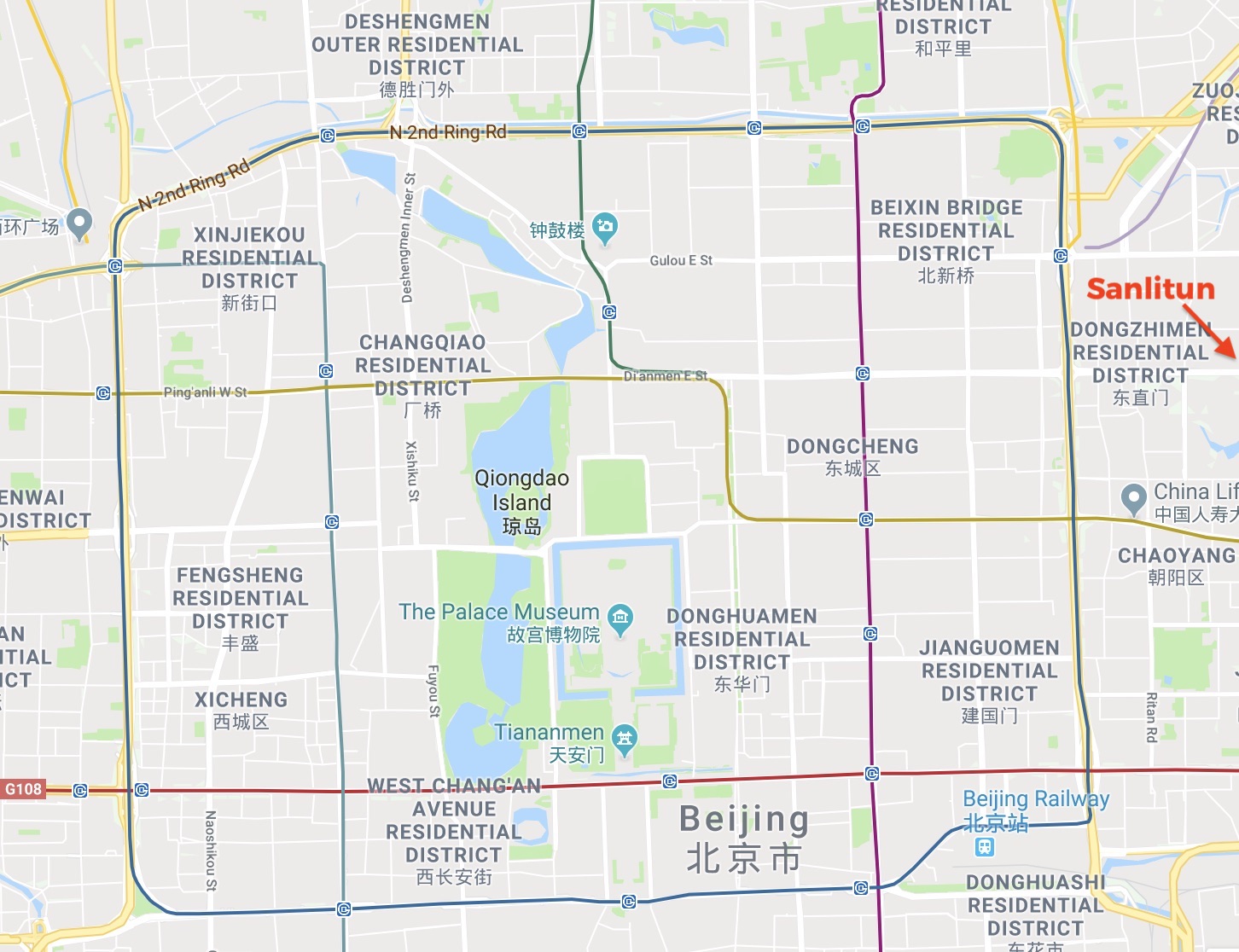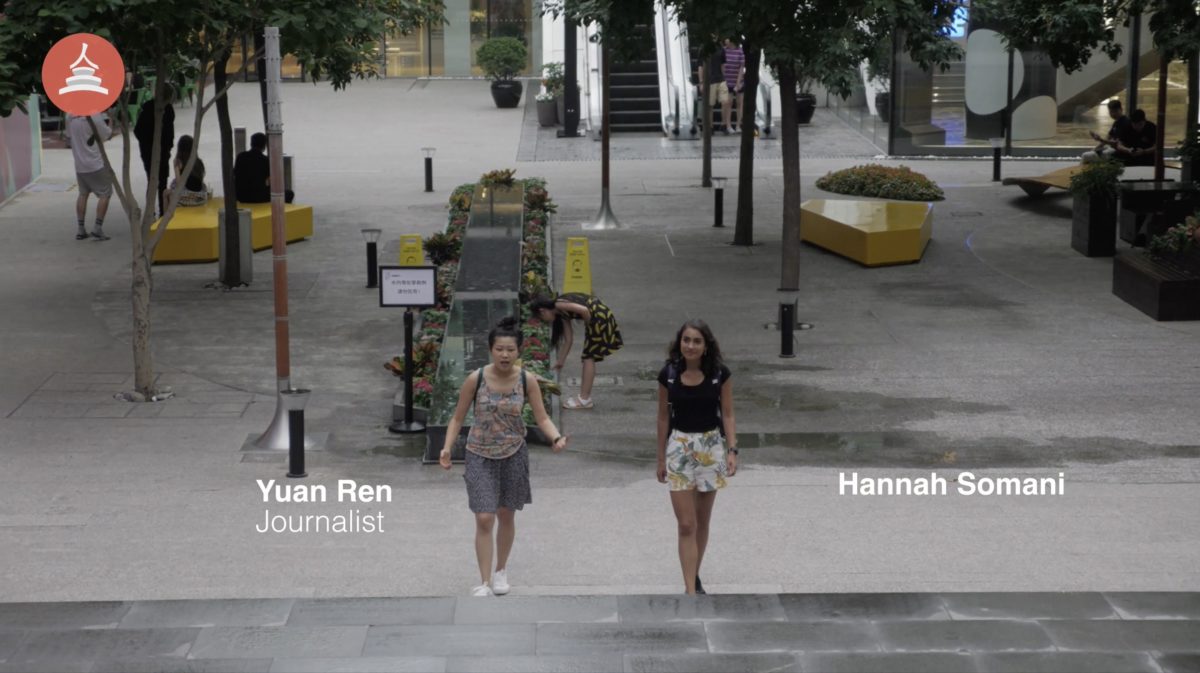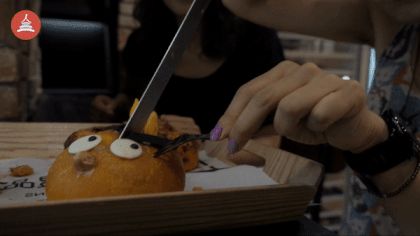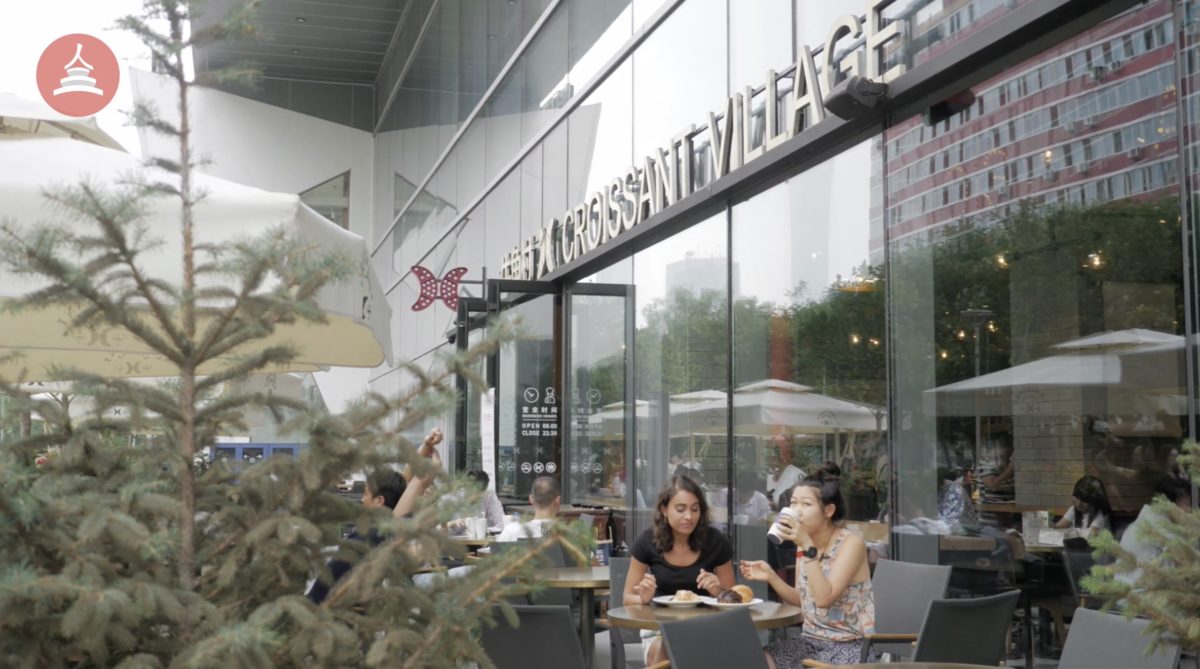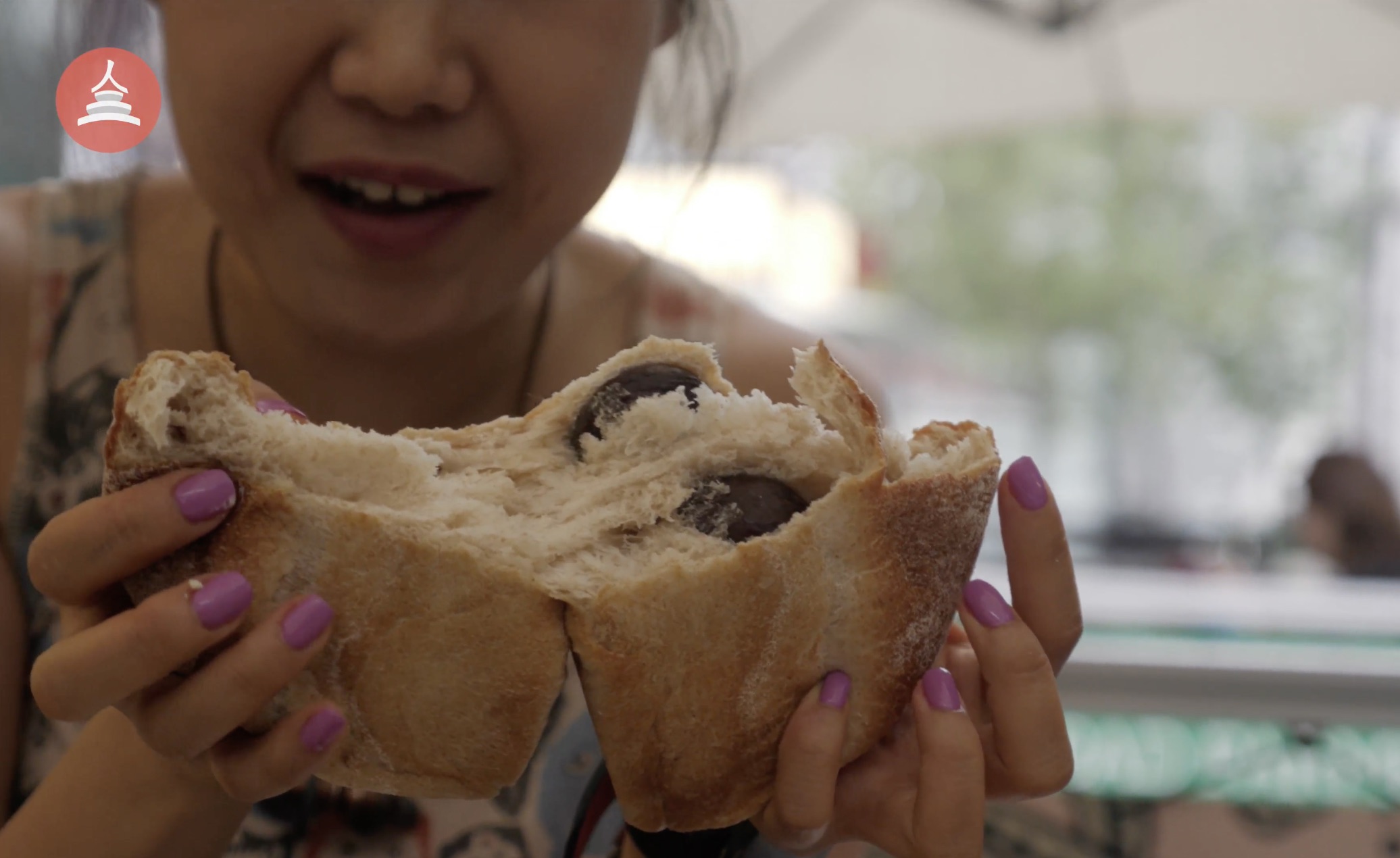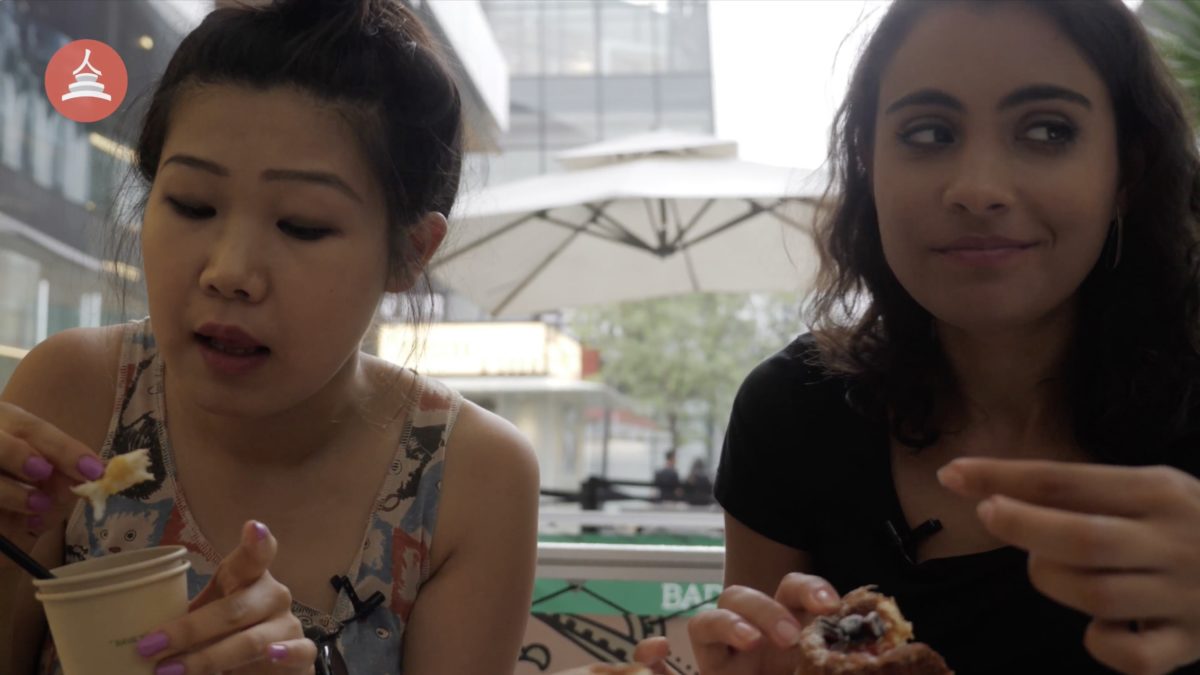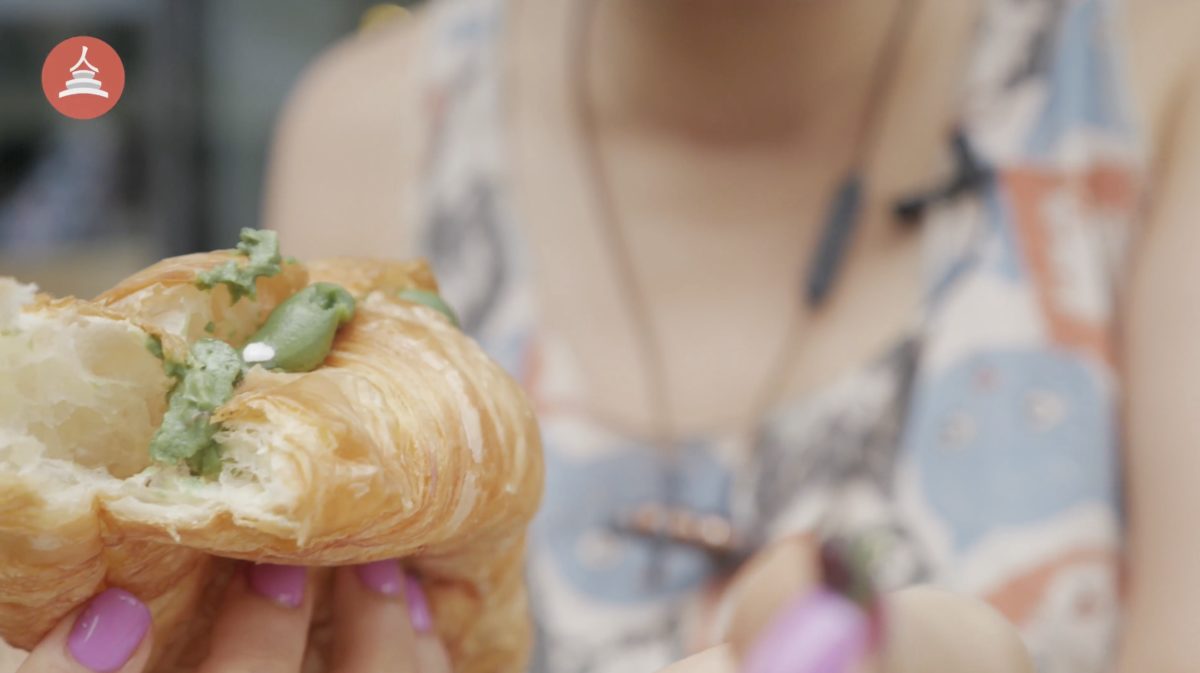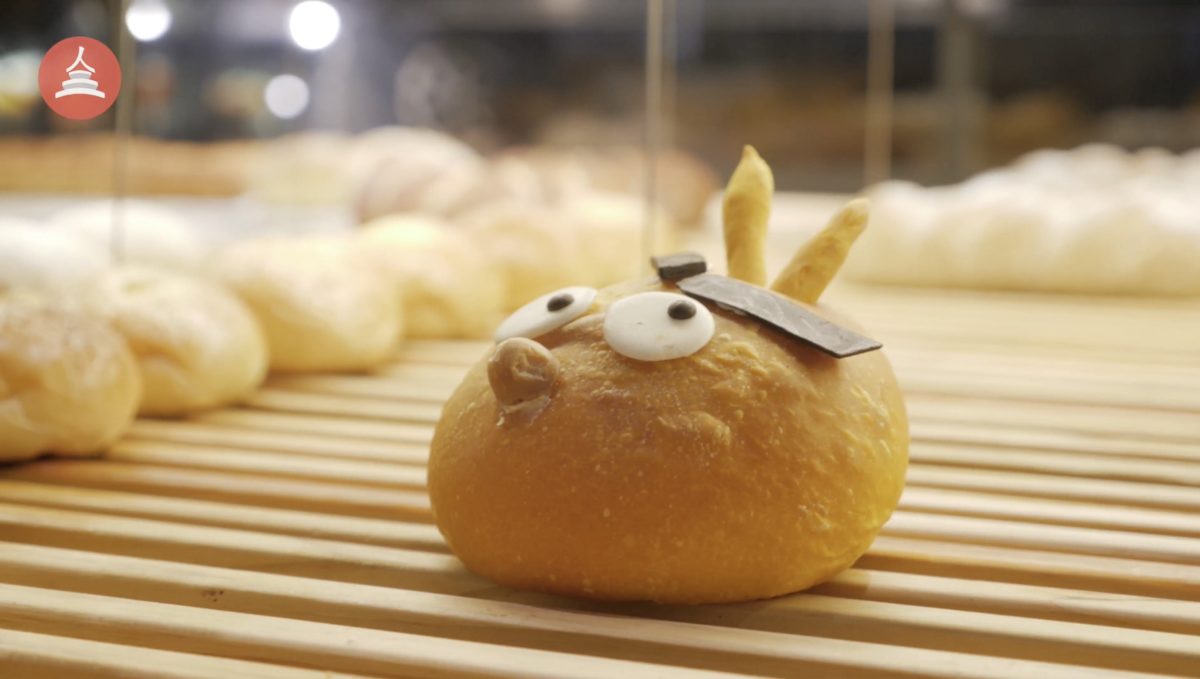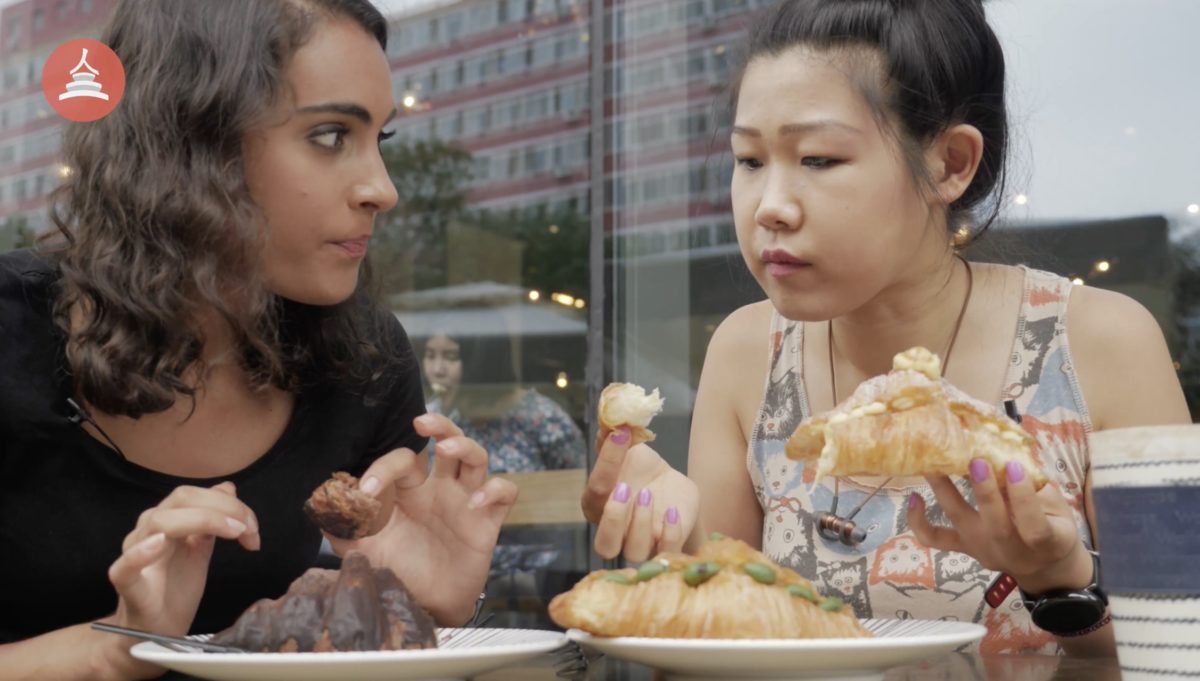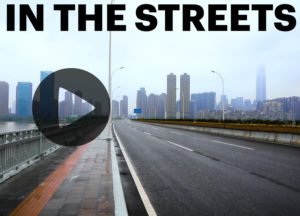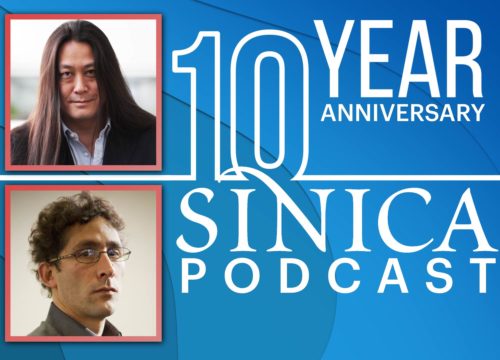Beijing Ren: The Bakeries of Sanlitun
Beijing Ren is a video series documenting local contemporary Beijing life and culture.

Western-style cafes and bakeries are becoming popular in big cities like Beijing and Shanghai, and are particularly prevalent in fashionable areas like Sanlitun in the center of Beijing, which is where to go to be on the forefront of all international trends in China.
Baked bread — a.k.a. “Western-style” bread — is still considered an import in China, even though bread in its most basic form is available in supermarkets and convenience stores. Traditionally, European-style bread had no part to play in the traditional Chinese diet, and still doesn’t today. Just as Chinese people thought Westerners ate hamburgers every day, Western bread and pastries still to a large extent epitomize Western food culture. China’s equivalents are the steamed bun (馒头 mántou) and flatbread, of which there is plenty of variety (“Chinese pancake,” “Chinese crepe,” etc.).
Western bread will almost always taste sweet in China. Chinese baked goods are traditionally sold and eaten on special occasions, and are only made by special chefs — very few people own ovens or bake at home. Even the nomenclature of a loaf of bread today is different: sliced bread is often referred to “toast,” whether or not the consumer has a toaster (and most people don’t). Many will eat sliced bread in the same way as a steamed bun — for breakfast, with pickled duck egg and porridge, or dipped in hot milk or soy milk (not usually consumed cold), like how a deep-fried dough sticks (a traditional northern breakfast) would be eaten.
But recently, Western baked goods have gotten trendy, particularly in Beijing. All sorts of interesting creations and tastes emerged — Chinese bakers have worked their own magic onto European baked goods and pastries. Chinese people love putting fillings inside buns and cakes and bread — think baozi, mooncakes, dumplings, Chinese meat pies (馅饼 xiànbǐng — flatbread with filling) — they are all centered around a prominent filling. There’s no exception when it comes to Western baked goods.
I took my friend Hannah, a research scientist visiting from the UK, to three popular bakeries in Sanlitun to test out what they have to offer.
First stop: Love Grains (Topwin Center, 1 Sanlitun South Street, ground floor).
The irony of Love Grains is that there’s not much “grain” in-store. The bakery is known for being fun: colorful bread in the form of cartoon characters such as the Angry Bird, or a giant bread in the shape of a bookworm. There are also wine-flavored bread and squid ink bread — much of it looks like what you might find in a toy shop. The bread itself has quite a uniform flavor — fluffy and sweet. It’s the filling and color that sets them apart.
As we find out with the Angry Bird (愤怒鸟 fènnù niǎo) though, the filling isn’t particularly substantial in this store.
Our favorite was the most Chinese of them all: the Super Laoganma (超级老干妈 chāojí lǎo gàn mā). Laoganma is a chili black bean sauce spread on buns, stirred in noodles, and added to any dish for a fiery kick. It has a cult following. The Super Laoganma bread is essentially a toasted bun with plenty of Laoganma and tuna twisted into the bread. We also had the “hairy” (毛茸茸 máoróngrōng), a plain bun with lots of dried meat floss stuck over it — a mix of mildly sweet and salty dried meat, a tasty combo that’s been popular for years.
Second stop: Croissant Village (Topwin Center, 1 Sanlitun South Street, ground floor). A lot of croissants of different sizes, all made in-store behind a window you can peer through. A very buttery waft is detectable rows of shops down. Again, sweet fillings take center-stage in this so-called village, and croissants are filled with flavored creams in the same way as a chocolate eclair.
We tried the Croissant with Durian Cheese (匠心榴莲 jiàngxīn liúlián), made by slicing a croissant in half and filling it with sweet durian cream (very pungent!). We also tried the Crazy Black (疯狂的黑 fēngkuáng de hēi), which is a chocolate-flavored croissant with melted chocolate poured over the top and dried to a cracking perfection. The matcha croissant is made as the durian croissant, but with added red beans (a favorite ingredient in Chinese pastries: think mung bean-flavored cakes and buns) in matcha cream. The croissant dough was a bit on the dry side, so thank goodness a microwave was provided to heat up some pre-purchased milk for dunking.
Last stop: Bad Farmer & Our Bakery (Sanlitun Village North). We headed north to Sanlitun Village, where this “wang hong” (网红 wǎnghóng), or celebrity bakery, lines up with young people going mad for its good-looking and definitely more authentic ingredients. You get bang for your buck — if there’s a filling, you can be guaranteed it’ll be abundant and very tasty. The cream tastes like real cream and the chestnuts in the chestnut bread are very much whole:
We got the snaky-shaped Double Cheese Pastry (芝士起酥卷 zhīshì qǐ sū juǎn), which was filled with plenty of cream cheese and cheddar. The pastry was crispy and fresh, too. The beauty of the roll lies in the way it unravels to double in size: great fun if you’re into playing with your food before you eat. We also got the Chestnut Bread, which was just a very soft loaf of white bread with individual, giant chestnuts planted in the dough. Fishing them out and eating the chestnuts on their own is a must, but leaves a rather sad-looking, torn-apart loaf with lots of holes.
Bad Farmer bakery is also known for their Dirty Choco (脏脏包) — a chocolate croissant doused in cocoa powder (it gets everywhere, hence “dirty”) that’s only on sale at lunchtime, from 1 pm to 4 pm. There’s always a queue, and it’s always sold out quickly, so get there early!

Previously:
Next:
Beijing Ren is produced by Yuan Ren; follow her on Twitter @girlinbeijing
